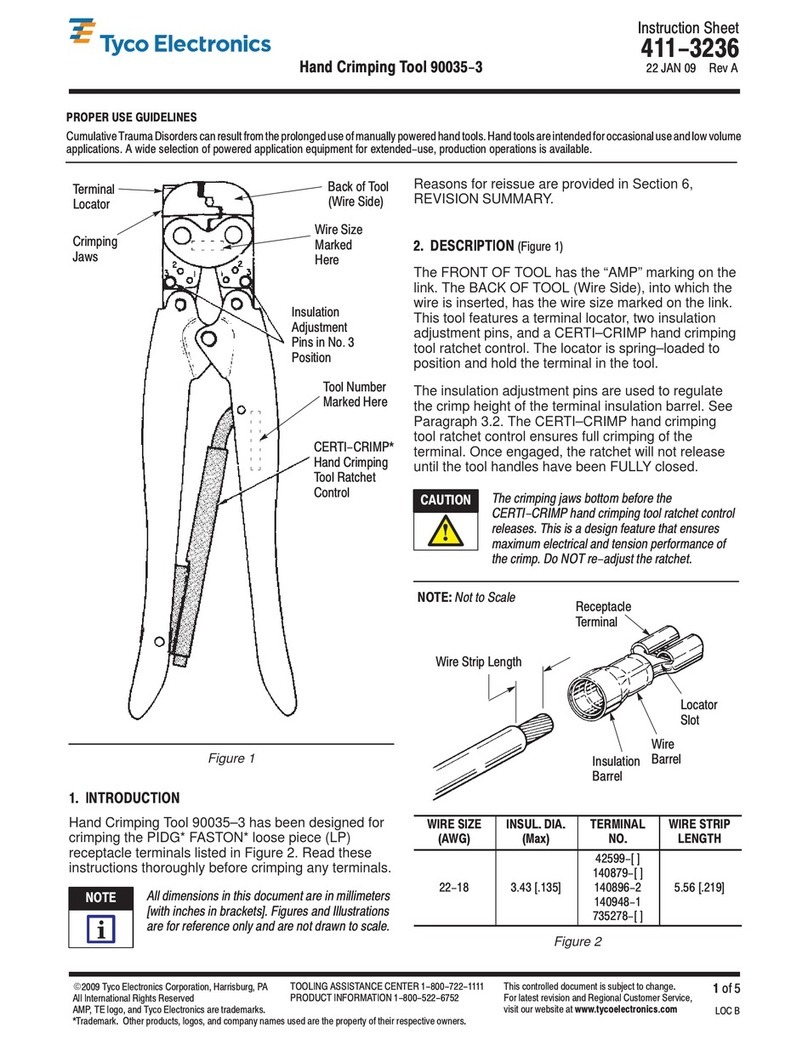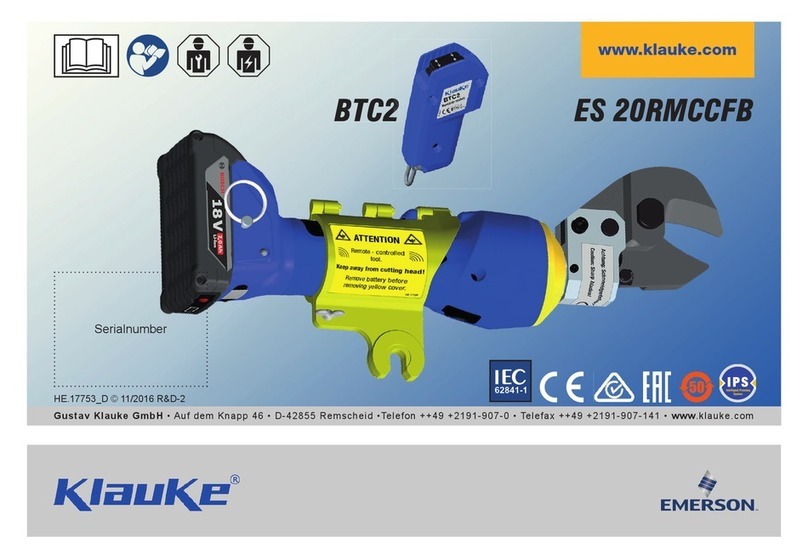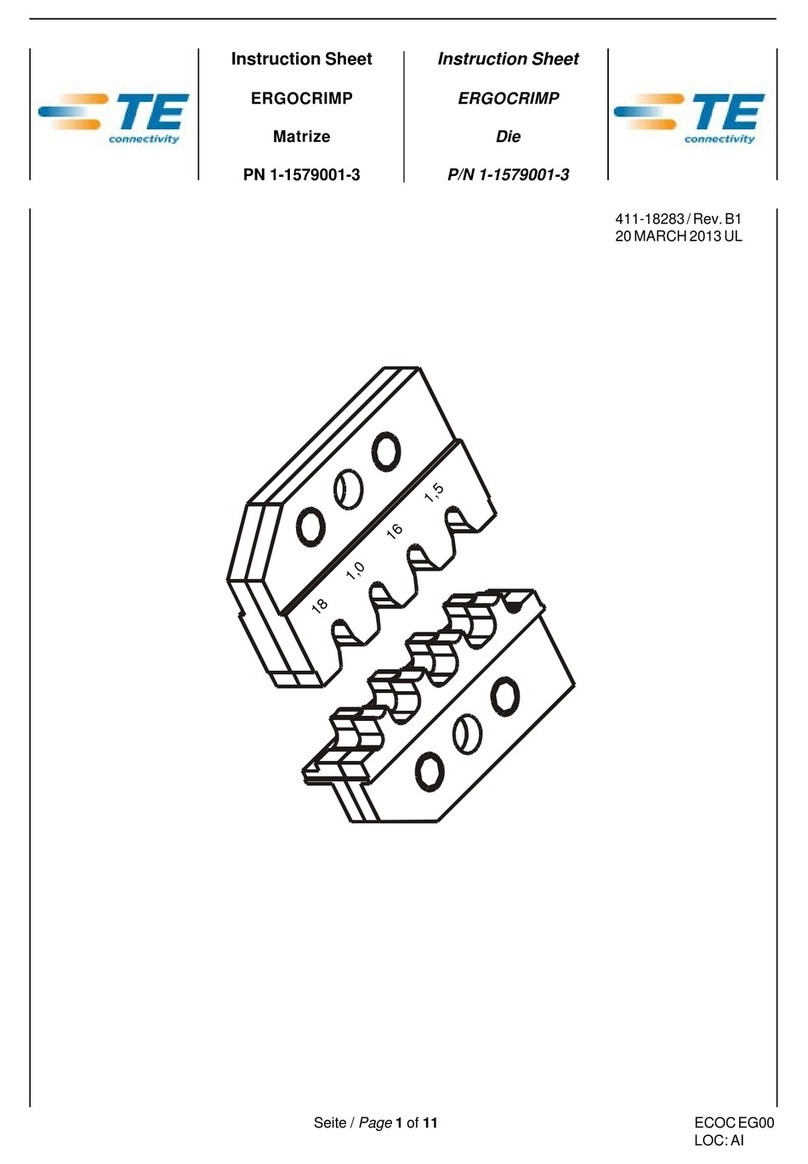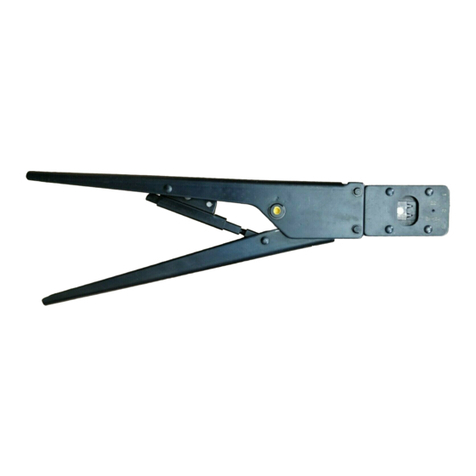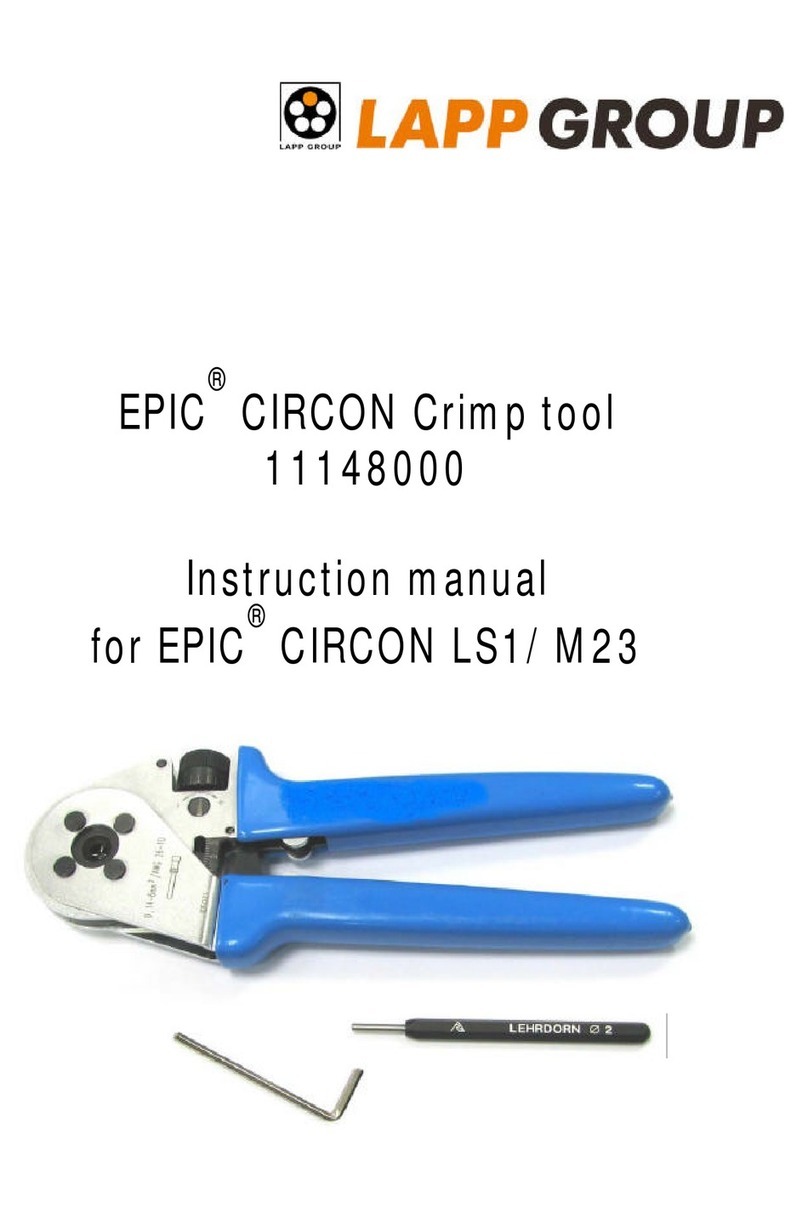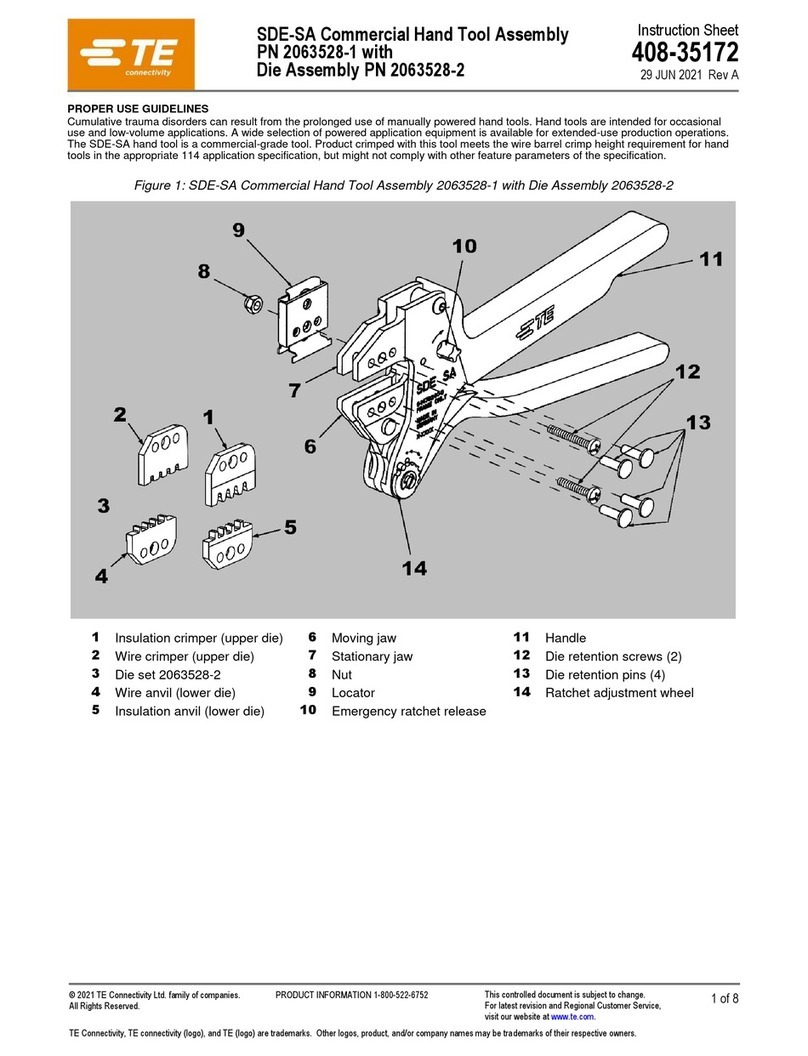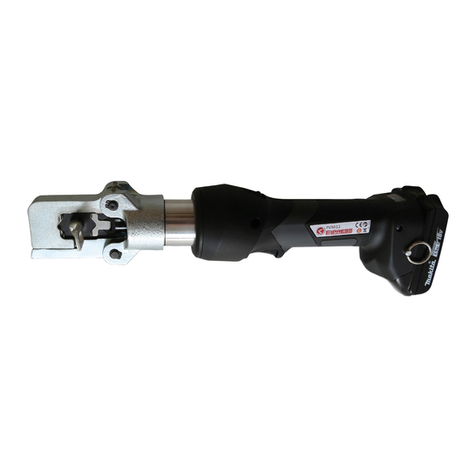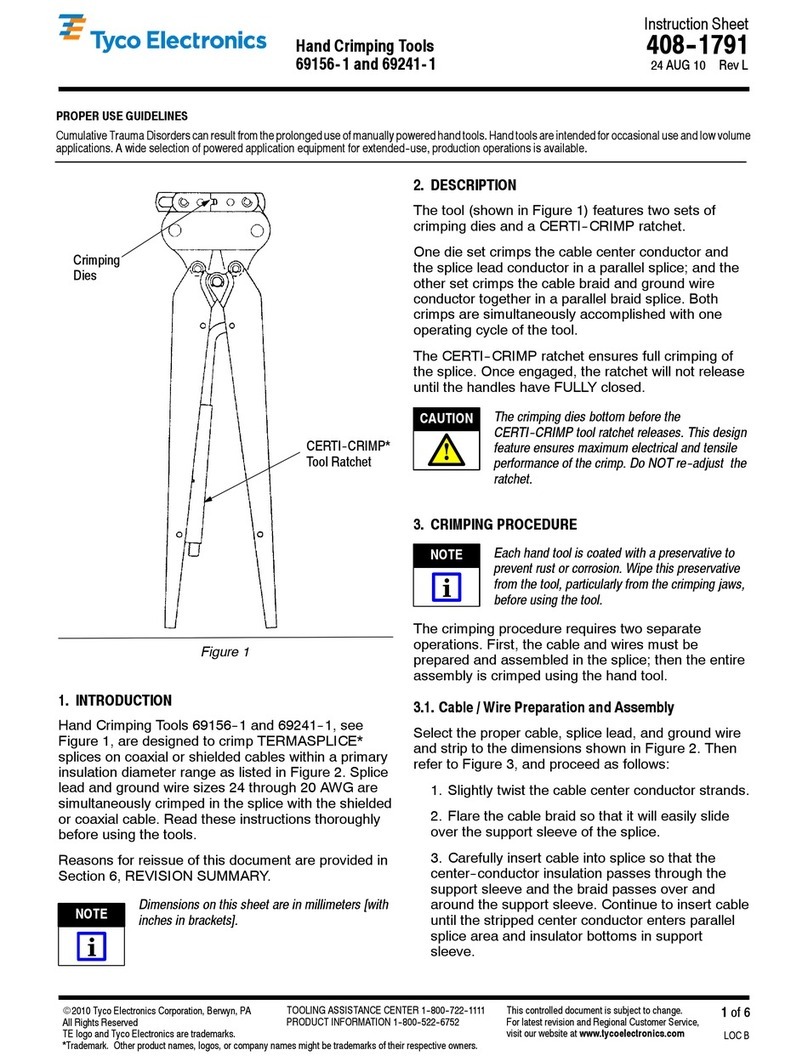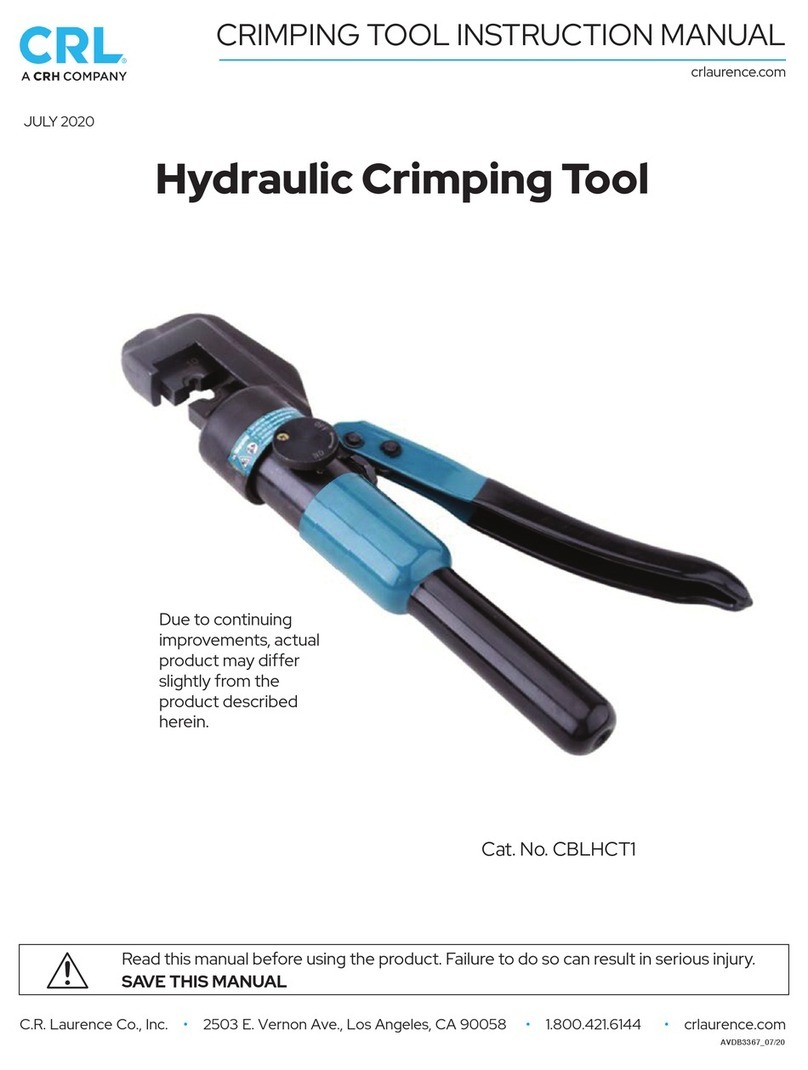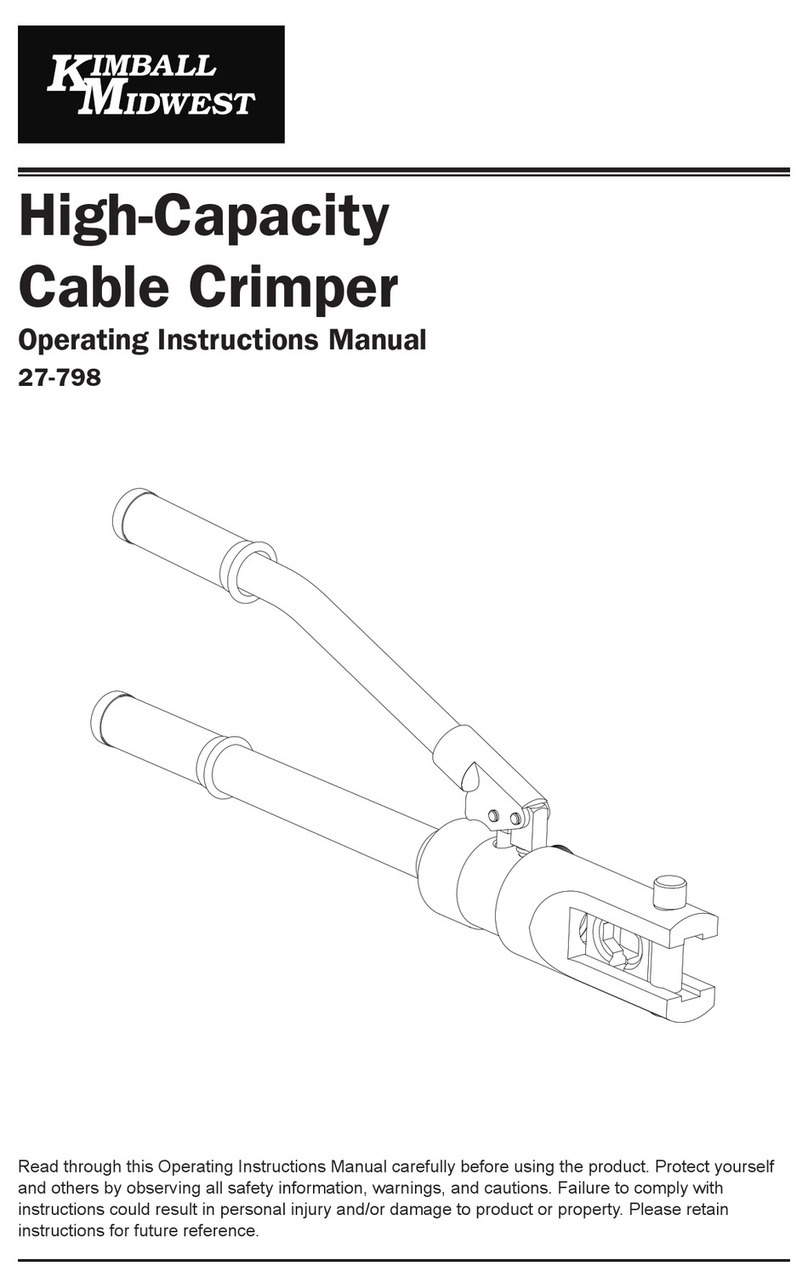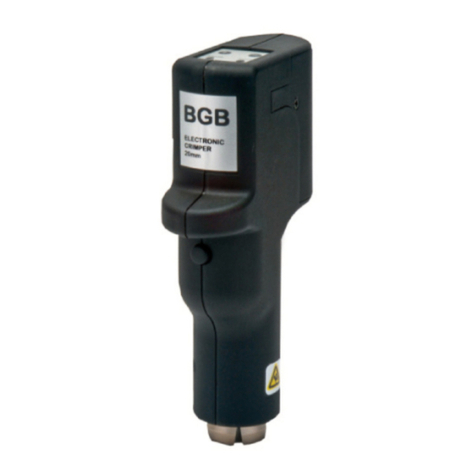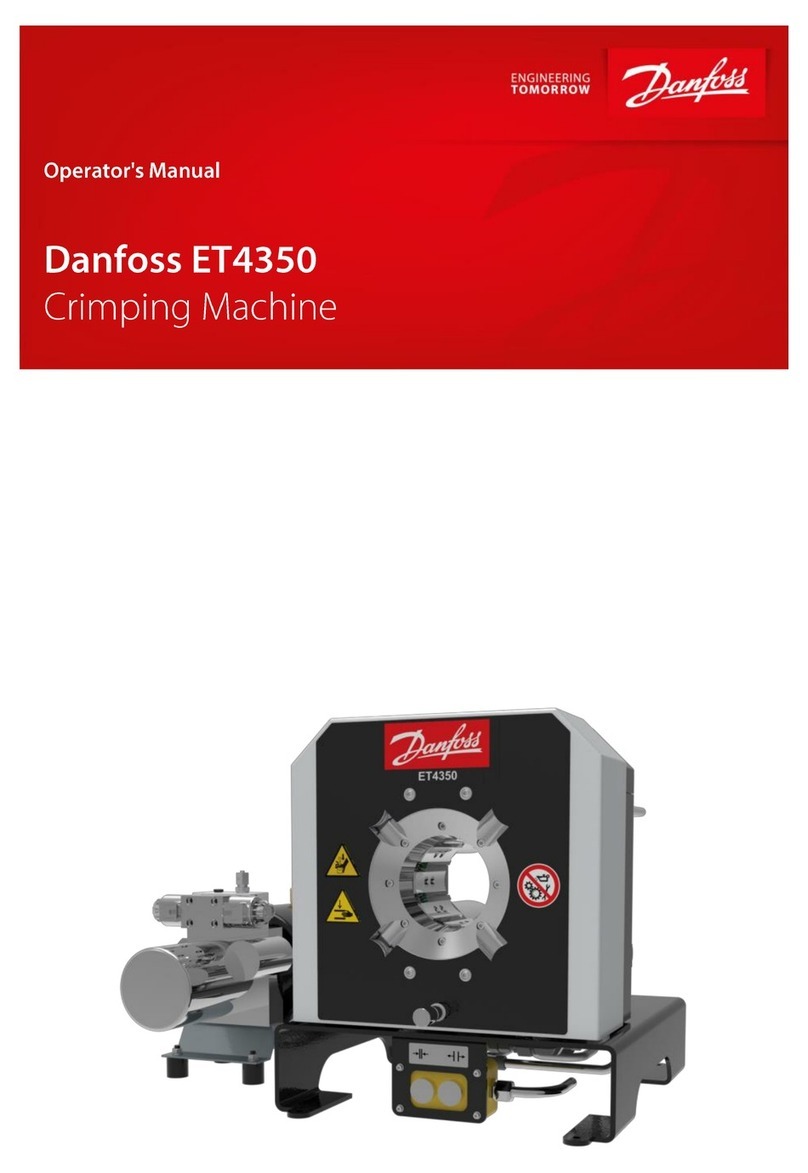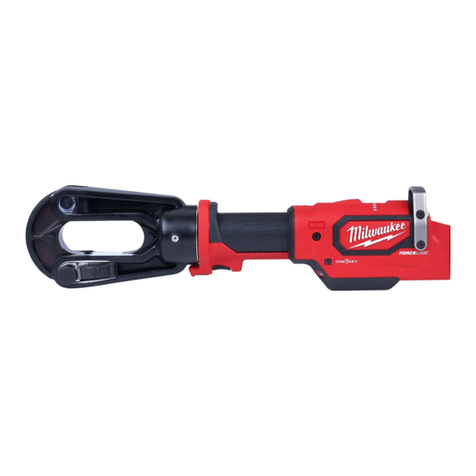
Rev.: 2022-02-01 (Bilder können abweichen)
Crimp-Systemzange
PEW 12
Bedienungsanleitung DE
Die Crimp-Systemzange ist nach dem neuesten Stand der Technik und den
anerkannten sicherheitstechnischen Regeln hergestellt. Die Zange darf nur
in technisch einwandfreiem Zustand sowie sicherheits- und gefahrenbewusst
benutzt werden und ist nur für den in der Bedienungsanleitung beschriebenen
Zweck zu verwenden.
Allgemeines
ACHTUNG!
Eine eigenmächtige Veränderung oder eine nicht be-
stimmungsgemäße Verwendung der Handcrimpzange
schliesst eine Haftung des Herstellers für daraus resultierende
Schäden aus. Nur an spannungsfreien Leitern arbeiten!
Verwendungszweck
Beschreibung
Die Crimp-Systemzange besteht aus einer Grundzange 1mit Stellscheibe 2und
Notentriegelung 3, einem Crimpmatrizenpaar 4, zwei Befestigungsschrauben
5für die Matrizen und bei Bedarf aus einer Positionierhilfe 6(Kontaktaufnahme).
Positionierhilfen können verbinderbezogen nachträglich angebracht werden.
Crimpeinsätze und Positionierhilfen sind separat erhältlich. Es ist möglich,
die Crimpkraft zu justieren (siehe auch Punkt „Einstellen der Crimphöhe“)
und sollte nur von Fachpersonal ausgeführt werden. Die Crimp-Systemzange
verfügt über einen Ratschenmechanismus. Erst nach Überwindung der letzten
Raststufe öffnet die Zange automatisch (Prinzip der Zwangsvollendung). Um
eine Beschädigung der Crimpmatrizen bzw. des Verbinders zu vermeiden,
kann bei Fehlcrimpung die Zange über die Notentriegelung vorzeitig geöffnet
werden.
4
6
1
3
2
5
1
2
3
4
M 4x11
6
5
7
8
M 4x25
Crimpvorgang
1. Crimpeinsatz und ggf.
Zubehör montieren (siehe 4.1)
2. Kabel auf angepasste Länge
(ggf. Herstellerangaben
beachten) abisolieren
3. Verbinder entsprechend dem
Querschnitt in Crimpeinsatz
oder die entsprechende
Stelle im Locator einlegen und
mittels Zangendruck fixieren,
Kabel in Verbinder einführen
4. Zange schließen und
nach Überwindung der
letzten Raststufe öffnen
(Zwangssperre)
Wechsel Crimpeinsatz /
Montage Kontaktaufnahme und Drahtanschlag
•zum Vercrimpen von vielen unterschiedlichen Kontakten, wie z.B. gedrehte
Kontakte, gestanzte Stift- & Buchsenkontakten, Aderendhülsen, Datenstecker u.s.w.
•Verwendung unterschiedlicher Crimpeinsätze ermöglicht breites Anwendungsgebiet
•Crimpeinsatz besteht aus Ober- 3und Untermatrize 4
•Schrauben 1+2 entfernen
•Ober- 3und Untermatrize 4entnehmen
•Einsetzen von neuer Ober- 3und Untermatrize 4
•Zange soweit schließen, dass sich Ober- 3und
Untermatrize 4zentrieren können
•Schrauben 1+2 festziehen
1
2
3
4
M 4x11
•Zur Montage einer optionalen
Kontaktaufnahme Schraube an
Untermatrize durch Schraube M
4x16 ersetzen
•Kontaktaufnahme 5 Zange an-
schrauben und je nach Locatorart
mittels Innensechskant- oder
Maulschlüssel befestigen
•Zur Montage eines optionalen Drahtanschlages 7Schraube 1an Ober-
matrize durch Schraube M 4x25 ersetzen
•Drahtanschlag 7an Zange anhalten und mit Schraube 8durch
Obermatrize 4mit mitgelieferter Mutter befestigen
Notentriegelung der Zwangssperre
Die Zwangssperre öffnet sich nach Vollendung des Crimpvorganges
automatisch. Bei einer Unterbrechung des Crimpvorganges müssen zum
Öffnen der Zwangssperre die Zangenschenkel etwas zusammengedrückt
und die Notentriegelung mit dem beiliegendem Innensechskantschlüssel mit
Fähnchengriff betätigt werden.
Notentriegelung
Einstellung der Crimphöhe
Die Crimpkraft der Crimp-Systemzange ist vom Werk eingestellt. Die
Handkraft im Leerhub beträgt 130 – 180 N. Die Crimpmatrize und
Handzange sind so aufeinander abgestimmt, dass bei dieser Handkraft
ein optimaler Crimp erzeugt wird. Sollte das Crimpergebnis nicht der
geforderten Spezifikation des Verbinderherstellers entsprechen (Crimphöhe,
Auszugskraft), so kann das folgende Ursachen haben:
Fehler mögliche Ursache Lösung
Crimpergebnis
entspricht nicht
der geforderten
Spezifikation des
Verbinderherstellers
Falscher Crimpeinsatz oder
falsches Crimpnest
Den, für die Anwendung
entsprechenden, Crimpeinsatz
montieren und im richtigen
Crimpnest verarbeiten
Falsches Kabel Kabel gemäß den
Spezifikationen des
Verbinderherstellers verwenden
Anwendungsbedingter
Verschleiß der Zange
Nachjustieren der Crimpkraft
Verschlissender
Crimpeinsatz
Crimpeinsatz austauschen um
Schäden zu vermeiden
ACHTUNG!
Die Crimphöhe sollte regelmäßig durch Fachpersonal
der Qualitätskontrolle überprüft und gegebenenfalls wie
nachfolgend beschrieben eingestellt werden.
1. Entfernen Sie die Schaftschraube 1mit einem
Schraubendreher (Sicherungsring 4 bleibt an
der Schaftschraube und wird nicht entfernt).
2. Wenn die Stellscheibe 2gegen den Uhrzeiger-
sinn (+) gedreht wird, wird eine höhere Crimp-
kraft und eine kleinere Crimphöhe erreicht.
3. Wird die Stellscheibe im Uhrzeigersinn (-)
gedreht, so erhält man eine geringere Crimp-
kraft und somit eine größere Crimphöhe.
Die Nachjustierung der Handkraft sollte 180 N
nicht überschreiten.
4. Durch Verwendung der Anschraubbohrung 3
kann eine Veränderung der Crimpkraft um nur
eine halbe Kerbe erreicht werden. Dadurch ist
eine sehr feine Verstellung der Crimpkraft möglich.
5. Schaftschraube einsetzen
6. Vor Benutzung der Zange ist darauf zu achten,
dass die Stellscheibe ordnungsgemäß durch die
Schaftschraube gesichert ist.
1
2
3
4
Garantie
Die Crimp- Systemzange unterliegt einer sorgfältigen Qualitätskontrolle.
Es gelten die allgemeinen Garantiebestimmungen. Die Gewährleistung
erstreckt sich nicht auf Verschleißteile.
Wartung und Instandhaltung
Die Crimp-Systemzange muss vor Arbeitsbeginn in einem ordnungsgemäßen
und sauberen Zustand sein. Crimprückstände sind zu entfernen. Die Gelenke
sind regelmäßig mit leichtem Maschinenöl zu ölen und vor Verschmutzung
zu schützen. Es ist darauf zu achten, dass alle Bolzen durch Sicherungsringe
gesichert sind. Der Festsitz der Schaftschraube zur Sicherung der
Stellscheibe ist zu prüfen. Die Instandhaltung der Zange sollte beim
Hersteller erfolgen.

